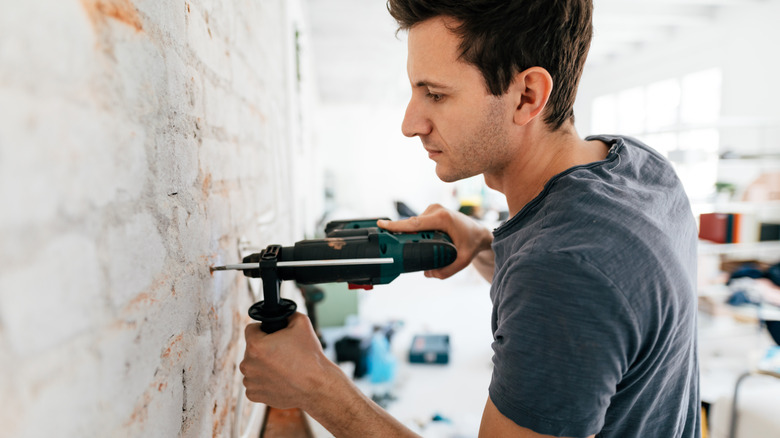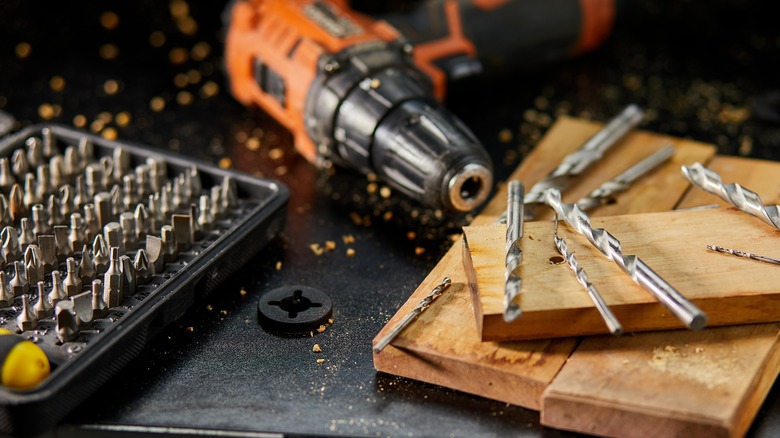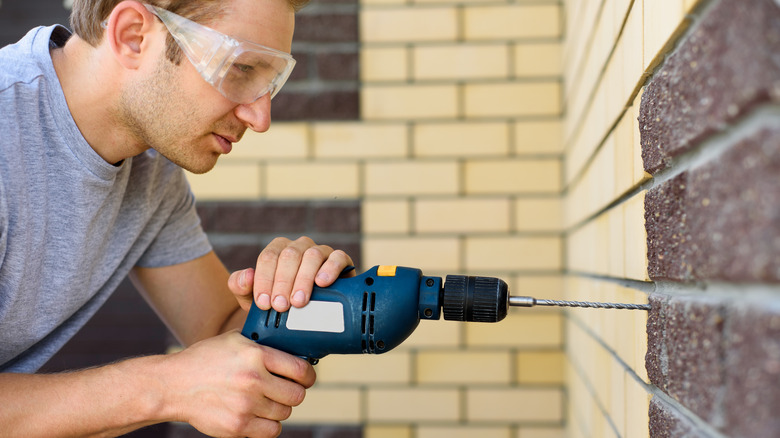What To Consider Before Drilling Into Brick
Although drilling into brick may appear difficult, it is perfectly doable with the correct equipment and knowledge. Understanding how to approach it is the key. Prior to moving further, you must exercise caution and consider certain factors. This includes knowing which tools and safety gear to use and understanding the nature of brick-and-mortar. Also, note that brick can be brittle, even though it's a hardy, durable, and long-lasting material — one wrong move, and you could end up with cracks, especially if you drill too close to the edge. Damaged bricks are not only visually unappealing but can also compromise the structural integrity of your wall. In short, you must be well-prepared to successfully undertake this task.
Whether your project involves mounting a new television bracket, hanging an outdoor decoration, or securing a trellis, you'll need the necessary skill to make sure the item is secured safely. This guide will walk you through the essentials to consider before drilling into brick, including choosing the right drill bit, understanding the brick-and-mortar structure, and the actual process of drilling the hole.
Important thing to consider before drilling
An essential part of drilling into a brick wall is understanding the wall's structure. Brick walls consist of bricks and mortar. While drilling into the softer mortar might seem easier, it may not provide a strong enough hold, particularly for heavier or fragile items. Generally speaking, you should try to assess the condition of your bricks and mortar before you decide where to drill. Also, be aware of what's behind the wall where you intend to drill and avoid areas that might contain electrical wires or plumbing pipes to prevent causing serious damage.
The next step is to ensure you've gathered all the necessary tools. Choosing the right drill bit is crucial because it is the element that actually cuts through the material that you are working on. Drill bits are available in various configurations and dimensions, and the specific kind of bit you require will depend on the job at hand. A drill bit specifically designed to drill through hard materials like brick and concrete has a hardened tip, usually made of tungsten carbide, which can withstand the rigidity of the brick.
Furthermore, you'll need a power drill with a hammer function. The hammer function applies forward pressure and a hammering motion simultaneously, which allows you to drill into the brick more efficiently. Safety equipment is also paramount, so ensure you have safety glasses to protect your eyes from dust or debris. Gloves will also provide a better grip and protect your hands.
Step-by-step guide to drilling into brick
Now that you have the right tools and understanding, it's time to drill into the brick. Before you begin drilling, put on your safety glasses. Next, reduce the torque setting on your drill and create a gauge to measure your drilling depth. Once done, mark the spot where you want to drill. Be sure it's in the right place because once you drill into brick, there's no going back. Place a sharp tool on the marked point and tap it with a hammer to create a small dent. Place the drill at the spot and apply steady pressure, but don't push too hard — let the drill do the work.
Start drilling slowly, allowing the drill bit to gently score the surface, and then increase your speed. As you drill, you might need to pull the drill out periodically to remove dust from the hole. Once you've drilled the hole to your desired depth, remove the drill bit, ensuring all dust and debris are cleared from the hole — you can use a vacuum to do this. Finally, insert your wall plug or anchor into the hole. If it's tight, you can gently tap it in with a hammer. Remember, patience is your friend when drilling into brick. Rushing could lead to mistakes or damage. By taking your time, you can ensure a job well done.


